[English] 日本語
 Yorodumi
Yorodumi- PDB-1fzm: MHC CLASS I NATURAL MUTANT H-2KBM8 HEAVY CHAIN COMPLEXED WITH BET... -
+ Open data
Open data
- Basic information
Basic information
| Entry | Database: PDB / ID: 1fzm | |||||||||
|---|---|---|---|---|---|---|---|---|---|---|
| Title | MHC CLASS I NATURAL MUTANT H-2KBM8 HEAVY CHAIN COMPLEXED WITH BETA-2 MICROGLOBULIN AND VESICULAR STOMATITIS VIRUS NUCLEOPROTEIN | |||||||||
 Components Components |
| |||||||||
 Keywords Keywords | IMMUNE SYSTEM / major histocompatibility complex peptide-MHC | |||||||||
| Function / homology |  Function and homology information Function and homology informationEndosomal/Vacuolar pathway / DAP12 interactions / Antigen Presentation: Folding, assembly and peptide loading of class I MHC / ER-Phagosome pathway / DAP12 signaling / Immunoregulatory interactions between a Lymphoid and a non-Lymphoid cell / helical viral capsid / antigen processing and presentation of exogenous peptide antigen via MHC class I / inner ear development / antigen processing and presentation of endogenous peptide antigen via MHC class I via ER pathway, TAP-dependent ...Endosomal/Vacuolar pathway / DAP12 interactions / Antigen Presentation: Folding, assembly and peptide loading of class I MHC / ER-Phagosome pathway / DAP12 signaling / Immunoregulatory interactions between a Lymphoid and a non-Lymphoid cell / helical viral capsid / antigen processing and presentation of exogenous peptide antigen via MHC class I / inner ear development / antigen processing and presentation of endogenous peptide antigen via MHC class I via ER pathway, TAP-dependent / cellular defense response / Neutrophil degranulation / lumenal side of endoplasmic reticulum membrane / cellular response to iron(III) ion / negative regulation of forebrain neuron differentiation / antigen processing and presentation of exogenous protein antigen via MHC class Ib, TAP-dependent / iron ion transport / peptide antigen assembly with MHC class I protein complex / regulation of iron ion transport / regulation of erythrocyte differentiation / HFE-transferrin receptor complex / response to molecule of bacterial origin / MHC class I peptide loading complex / T cell mediated cytotoxicity / positive regulation of T cell cytokine production / antigen processing and presentation of endogenous peptide antigen via MHC class I / MHC class I protein complex / peptide antigen binding / positive regulation of receptor-mediated endocytosis / negative regulation of neurogenesis / cellular response to nicotine / positive regulation of T cell mediated cytotoxicity / multicellular organismal-level iron ion homeostasis / phagocytic vesicle membrane / negative regulation of epithelial cell proliferation / sensory perception of smell / positive regulation of cellular senescence / T cell differentiation in thymus / negative regulation of neuron projection development / protein refolding / viral nucleocapsid / protein homotetramerization / amyloid fibril formation / intracellular iron ion homeostasis / host cell cytoplasm / learning or memory / defense response to bacterium / ribonucleoprotein complex / external side of plasma membrane / structural molecule activity / Golgi apparatus / protein homodimerization activity / extracellular space / RNA binding / cytosol Similarity search - Function | |||||||||
| Biological species |  | |||||||||
| Method |  X-RAY DIFFRACTION / X-RAY DIFFRACTION /  SYNCHROTRON / CNS, done by rigid body refinement of starting model. / Resolution: 1.8 Å SYNCHROTRON / CNS, done by rigid body refinement of starting model. / Resolution: 1.8 Å | |||||||||
 Authors Authors | Rudolph, M.G. / Speir, J.A. / Brunmark, A. / Mattsson, N. / Jackson, M.R. / Peterson, P.A. / Teyton, L. / Wilson, I.A. | |||||||||
 Citation Citation |  Journal: Immunity / Year: 2001 Journal: Immunity / Year: 2001Title: The crystal structures of K(bm1) and K(bm8) reveal that subtle changes in the peptide environment impact thermostability and alloreactivity. Authors: Rudolph, M.G. / Speir, J.A. / Brunmark, A. / Mattsson, N. / Jackson, M.R. / Peterson, P.A. / Teyton, L. / Wilson, I.A. | |||||||||
| History |
|
- Structure visualization
Structure visualization
| Structure viewer | Molecule:  Molmil Molmil Jmol/JSmol Jmol/JSmol |
|---|
- Downloads & links
Downloads & links
- Download
Download
| PDBx/mmCIF format |  1fzm.cif.gz 1fzm.cif.gz | 102 KB | Display |  PDBx/mmCIF format PDBx/mmCIF format |
|---|---|---|---|---|
| PDB format |  pdb1fzm.ent.gz pdb1fzm.ent.gz | 76.9 KB | Display |  PDB format PDB format |
| PDBx/mmJSON format |  1fzm.json.gz 1fzm.json.gz | Tree view |  PDBx/mmJSON format PDBx/mmJSON format | |
| Others |  Other downloads Other downloads |
-Validation report
| Summary document |  1fzm_validation.pdf.gz 1fzm_validation.pdf.gz | 841.8 KB | Display |  wwPDB validaton report wwPDB validaton report |
|---|---|---|---|---|
| Full document |  1fzm_full_validation.pdf.gz 1fzm_full_validation.pdf.gz | 846.3 KB | Display | |
| Data in XML |  1fzm_validation.xml.gz 1fzm_validation.xml.gz | 19.8 KB | Display | |
| Data in CIF |  1fzm_validation.cif.gz 1fzm_validation.cif.gz | 28.7 KB | Display | |
| Arichive directory |  https://data.pdbj.org/pub/pdb/validation_reports/fz/1fzm https://data.pdbj.org/pub/pdb/validation_reports/fz/1fzm ftp://data.pdbj.org/pub/pdb/validation_reports/fz/1fzm ftp://data.pdbj.org/pub/pdb/validation_reports/fz/1fzm | HTTPS FTP |
-Related structure data
| Related structure data | 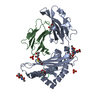 1fzjC 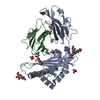 1fzkC 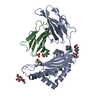 1fzoC 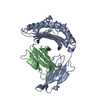 2vaaS C: citing same article ( S: Starting model for refinement |
|---|---|
| Similar structure data |
- Links
Links
- Assembly
Assembly
| Deposited unit | 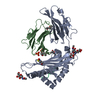
| ||||||||
|---|---|---|---|---|---|---|---|---|---|
| 1 |
| ||||||||
| Unit cell |
|
- Components
Components
-Protein , 2 types, 2 molecules AB
| #1: Protein | Mass: 31587.264 Da / Num. of mol.: 1 / Fragment: EXTRACELLULAR DOMAIN / Mutation: Y22F, M23I, E24S, D30N Source method: isolated from a genetically manipulated source Source: (gene. exp.)   |
|---|---|
| #2: Protein | Mass: 11704.359 Da / Num. of mol.: 1 Source method: isolated from a genetically manipulated source Source: (gene. exp.)   |
-Protein/peptide , 1 types, 1 molecules P
| #3: Protein/peptide | Mass: 956.078 Da / Num. of mol.: 1 / Fragment: RESIDUES 52-59 / Source method: obtained synthetically Details: The peptide was chemically synthesized. The sequence of the peptide is found naturally in Vesicular stomatitis virus. References: UniProt: P11212 |
|---|
-Sugars , 2 types, 2 molecules 
| #4: Polysaccharide | 2-acetamido-2-deoxy-beta-D-glucopyranose-(1-4)-[beta-L-fucopyranose-(1-6)]2-acetamido-2-deoxy-beta- ...2-acetamido-2-deoxy-beta-D-glucopyranose-(1-4)-[beta-L-fucopyranose-(1-6)]2-acetamido-2-deoxy-beta-D-glucopyranose Source method: isolated from a genetically manipulated source |
|---|---|
| #5: Sugar | ChemComp-NAG / |
-Non-polymers , 4 types, 281 molecules 
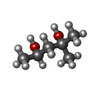
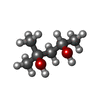




| #6: Chemical | | #7: Chemical | ChemComp-MRD / ( | #8: Chemical | #9: Water | ChemComp-HOH / | |
|---|
-Details
| Has protein modification | Y |
|---|
-Experimental details
-Experiment
| Experiment | Method:  X-RAY DIFFRACTION / Number of used crystals: 1 X-RAY DIFFRACTION / Number of used crystals: 1 |
|---|
- Sample preparation
Sample preparation
| Crystal | Density Matthews: 3 Å3/Da / Density % sol: 58 % | ||||||||||||||||||||||||
|---|---|---|---|---|---|---|---|---|---|---|---|---|---|---|---|---|---|---|---|---|---|---|---|---|---|
| Crystal grow | Temperature: 290 K / Method: vapor diffusion, sitting drop / pH: 6.4 Details: K/Na phosphate, MPD , pH 6.4, VAPOR DIFFUSION, SITTING DROP, temperature 290K | ||||||||||||||||||||||||
| Crystal grow | *PLUS Temperature: 17 ℃ | ||||||||||||||||||||||||
| Components of the solutions | *PLUS
|
-Data collection
| Diffraction | Mean temperature: 100 K |
|---|---|
| Diffraction source | Source:  SYNCHROTRON / Site: SYNCHROTRON / Site:  SSRL SSRL  / Beamline: BL9-2 / Wavelength: 0.98 / Beamline: BL9-2 / Wavelength: 0.98 |
| Detector | Type: ADSC QUANTUM 4 / Detector: CCD |
| Radiation | Protocol: SINGLE WAVELENGTH / Monochromatic (M) / Laue (L): M / Scattering type: x-ray |
| Radiation wavelength | Wavelength: 0.98 Å / Relative weight: 1 |
| Reflection | Resolution: 1.8→22.1 Å / Num. all: 49672 / Num. obs: 49672 / % possible obs: 95.1 % / Observed criterion σ(I): 2.5 / Redundancy: 2.9 % / Biso Wilson estimate: 22 Å2 / Rmerge(I) obs: 0.065 / Net I/σ(I): 23.2 |
| Reflection shell | Resolution: 1.8→1.82 Å / Redundancy: 2.5 % / Rmerge(I) obs: 0.48 / Mean I/σ(I) obs: 2.5 / Num. unique all: 1565 / % possible all: 91.9 |
| Reflection shell | *PLUS % possible obs: 91.9 % / Num. unique obs: 1565 |
- Processing
Processing
| Software |
| ||||||||||||||||||||||||||||||||||||
|---|---|---|---|---|---|---|---|---|---|---|---|---|---|---|---|---|---|---|---|---|---|---|---|---|---|---|---|---|---|---|---|---|---|---|---|---|---|
| Refinement | Method to determine structure: CNS, done by rigid body refinement of starting model. Starting model: pdb-entry 2vaa without peptide, water, and mutated side chains truncated to alanine. Resolution: 1.8→22.07 Å / Rfactor Rfree error: 0.004 / Data cutoff high absF: 56662868.01 / Data cutoff low absF: 0 / Isotropic thermal model: RESTRAINED / Cross valid method: THROUGHOUT / σ(F): 0 / σ(I): 0 / Stereochemistry target values: Engh & Huber
| ||||||||||||||||||||||||||||||||||||
| Solvent computation | Solvent model: FLAT MODEL / Bsol: 57.58 Å2 / ksol: 0.391 e/Å3 | ||||||||||||||||||||||||||||||||||||
| Displacement parameters | Biso mean: 30.9 Å2
| ||||||||||||||||||||||||||||||||||||
| Refine analyze |
| ||||||||||||||||||||||||||||||||||||
| Refinement step | Cycle: LAST / Resolution: 1.8→22.07 Å
| ||||||||||||||||||||||||||||||||||||
| Refine LS restraints |
| ||||||||||||||||||||||||||||||||||||
| LS refinement shell | Resolution: 1.8→1.91 Å / Rfactor Rfree error: 0.012 / Total num. of bins used: 6
| ||||||||||||||||||||||||||||||||||||
| Xplor file |
| ||||||||||||||||||||||||||||||||||||
| Software | *PLUS Name: CNS / Version: 1 / Classification: refinement | ||||||||||||||||||||||||||||||||||||
| Refine LS restraints | *PLUS
|
 Movie
Movie Controller
Controller


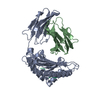

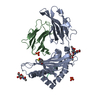
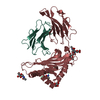
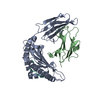

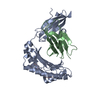
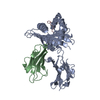
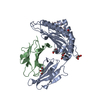
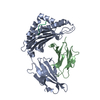
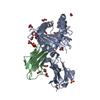
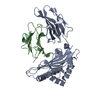
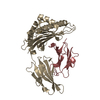
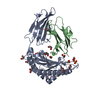
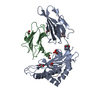
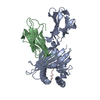
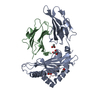
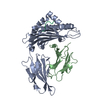
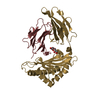
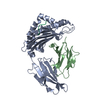
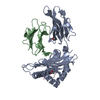
 PDBj
PDBj













